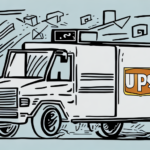Finding the Right Distribution Partner for Your Business
As a business owner, you understand the significance of having the right distribution partner to propel your company forward. A partner with experience and knowledge of the industry can help position your business for success. But with so many distribution partners to choose from, how can you be sure you are partnering with the right one?
The Importance of Distribution Partnerships for Business Growth
Why Distribution Partnerships are Key to Business Success
Distribution partnerships are vital for startup businesses and established companies looking to expand their reach. According to a 2023 Gartner report, leveraging distribution partners can increase market penetration by up to 30%. By collaborating with a partner that has a broad network of connections, your business can benefit from a wider audience, translating into increased sales.
In addition, distribution partnerships can help businesses save on costs associated with logistics and transportation. Partnering with a company that already has established distribution channels allows you to avoid the expenses of setting up your own distribution network. This can free up resources to invest in other areas of your business, such as product development or marketing.
Staying Competitive with Your Distribution Strategy
As industries evolve, maintaining a competitive distribution strategy is essential. Continuously assess your partners' performance and be open to changes that may enhance your partnership. Stay informed by following industry trends, building relationships with influencers and industry leaders, and attending relevant conferences and webinars.
Measuring the ROI of Your Distribution Partnership
Measuring the return on investment (ROI) of your distribution partnerships is crucial to determine their cost-effectiveness and sustainability. Consider factors such as revenue generated, sales volume, customer retention, and customer satisfaction levels. According to the Harvard Business Review, businesses that regularly assess their distribution partnerships are 25% more likely to achieve sustained growth.
Selecting the Right Distribution Partner
Understanding Your Business Needs Before Choosing a Partner
Before selecting a distribution partner, assess your business's unique needs and objectives. Understand your target market and identify where they currently purchase your product or service. Additionally, establish a clear understanding of your customers' needs and expectations, including their preferred payment methods, delivery timelines, and pricing.
Researching Potential Distribution Partners: Where to Start
The next step in finding the right distribution partner is to research and identify potential candidates. Start by creating a list of ideal candidates that match your business requirements and objectives. Consider industry-related trade shows, networking events, and industry publications to find potential partners. Online directories of distributors and exploring distributors in neighboring markets are also effective methods.
Once you have a list of potential distribution partners, conduct thorough due diligence. Investigate their reputation in the industry, track record with other companies, and financial stability. Additionally, reach out to other businesses that have worked with the distributor to gather feedback and recommendations. This comprehensive research ensures you find the right fit for your business, setting the stage for a successful partnership.
Evaluating Distribution Partner Performance: Metrics that Matter
After identifying potential distribution partners, evaluate their performance based on key metrics such as sales volume, customer satisfaction, and delivery timelines. Assess their reputation in the industry and their ability to comply with contractual obligations, including payment schedules, logistics, and customer service.
Another critical factor is their level of engagement with your brand. Determine if they actively promote your products or services and if they are knowledgeable about your offerings to effectively communicate their value to customers. A partner invested in your brand and committed to its success can be a valuable asset.
Additionally, evaluate the compatibility of your company culture with that of your potential distribution partner. Aligning values, communication styles, and business practices are essential for a strong, mutual understanding and respect, which are foundational for a successful partnership.
Managing Risks and Mitigating Losses in Distribution Partnerships
Distribution partnerships come with inherent risks such as stockouts, late deliveries, and damaged goods, which can negatively impact your business. To mitigate these losses, ensure that your partner has the necessary insurance, complies with industry standards, and provides warranties on their goods or services. Sharing risks through jointly held liability insurance is also an effective strategy.
Establish clear communication channels and set expectations from the outset. Agree on delivery schedules, quality standards, and contingency plans for unforeseen events. Regular meetings and performance reviews can help identify potential issues early, allowing you to address them before they escalate.
Conduct thorough due diligence before entering into a distribution partnership. Research the partner's reputation, financial stability, and track record in the industry. Understand their distribution network, including capacity, infrastructure, and logistics capabilities, to ensure they can meet your business needs.
Avoiding Common Pitfalls in Distribution Partnerships
Despite the potential benefits, distribution partnerships can fail if not managed properly. Common pitfalls include under-capitalization, unclear roles, lack of communication, and failure to agree on terms. To avoid these issues, maintain transparency, ensure adequate resources are available, and foster a strong working relationship with your partner.
Building and Maintaining Strong Partnerships
The Importance of Communication in Distribution Partnerships
Effective communication is the cornerstone of any successful business partnership, including distribution partnerships. To prevent misunderstandings and disagreements, clearly define expectations and responsibilities from the beginning. Establish open lines of communication and keep each other informed about any changes in the business.
Regular meetings are essential for discussing issues, reviewing progress, and setting new goals. These interactions ensure that both parties remain aligned and are working towards the same objectives.
Transparent communication helps build trust between partners. When both parties openly share their goals, challenges, and successes, it fosters mutual respect and understanding, leading to a stronger and more productive long-term partnership.
Building Strong Relationships with Your Distribution Partners
Once you've identified and evaluated a distribution partner, focus on building a collaborative and sustainable relationship. Establish open lines of communication through regular meetings, email updates, and phone calls. Provide your distribution partner with the support they need to meet your expectations, including marketing materials, training, and technical assistance.
Regularly review and evaluate your distribution partner's performance by analyzing sales data, customer feedback, and addressing any arising issues. Use this information to identify areas for improvement and collaborate with your partner to implement necessary changes. Additionally, consider offering incentives or rewards for exceptional performance to strengthen the relationship and motivate your partner to continue delivering excellent results.
Negotiating and Formalizing Partnerships
Creating a Partnership Agreement: Essential Elements to Include
A clear partnership agreement is crucial to prevent misunderstandings and ensure both parties are aligned. The agreement should outline the terms and conditions of the partnership, including the responsibilities of each partner, payment schedules, exclusivity or non-exclusivity clauses, termination procedures, and dispute resolution mechanisms.
Include the duration of the partnership, specifying start and end dates or outlining terms for ongoing partnerships and conditions for renewal or extension. Additionally, detail how changes or amendments to the agreement will be handled and approved by both parties.
Tips for Negotiating Favorable Terms with Your Distribution Partner
Before finalizing the partnership agreement, negotiate terms that benefit both parties. Set realistic performance standards and agree on achievable goals. Ensure that payment schedules and delivery timelines are feasible, and establish fair and effective methods for resolving disputes.
Consider the level of exclusivity you are willing to offer. While exclusivity can provide security for your partner, it may limit your ability to work with other distributors or expand your market reach. Strive to find a balance that satisfies both parties.
Establish clear communication channels and set expectations from the onset of the partnership. This includes regular check-ins, updates on inventory and sales, and a plan for addressing any issues that may arise. Maintaining open and transparent communication is key to building a strong and successful partnership.
Leveraging Technology and Scaling with Your Distribution Partners
Leveraging Technology to Enhance Your Distribution Network
Technology has transformed every industry, including distribution. By integrating real-time tracking, analytics, and mobile applications into your operations, you can streamline your distribution network. Technology enhances communication and leads to greater transparency and collaboration with your distribution partners.
Scaling Your Business with the Right Distribution Partners
To scale your business and expand your reach, partner with distributors who share your vision and aspirations. Choose partners who understand your target market, products, and services, and are willing to invest resources and take risks to help your business grow. Selective partnering with organizations that align with your business goals and have a reputation for growth and innovation is essential for successful scaling.
Measuring the ROI of Your Distribution Partnership
Finally, it is essential to measure the ROI of your distribution partnership to determine if it is cost-effective and sustainable. Consider factors such as revenue generated, sales volume, customer retention, and customer satisfaction levels. Additionally, assess how your partnership impacts production and distribution costs.
In conclusion, finding the right distribution partner for your business is crucial to your success. Be realistic, conduct thorough due diligence, and establish open and honest communication with your partner to achieve a mutually beneficial partnership.




















